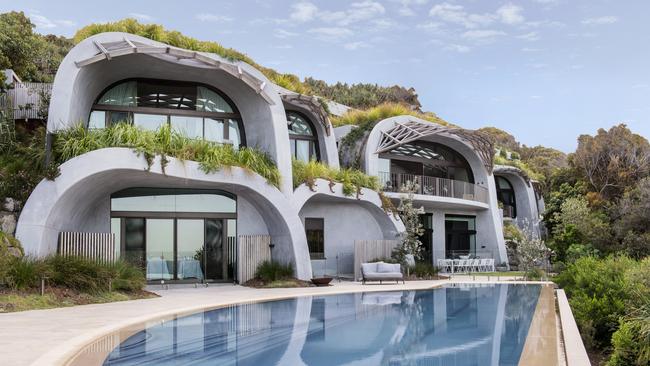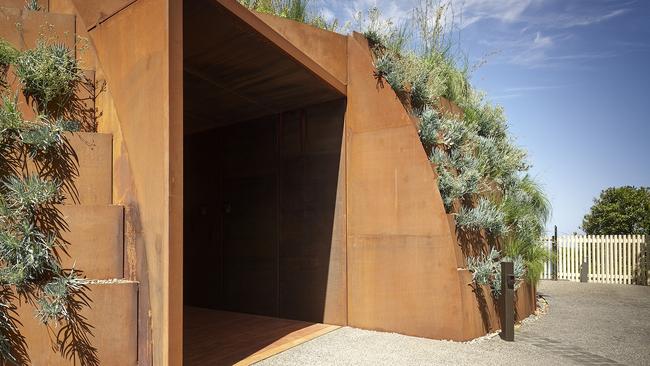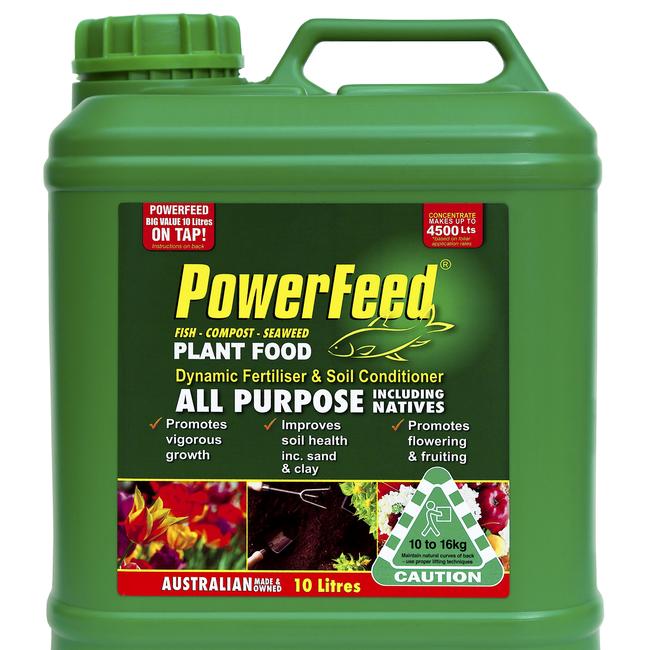Domic: a building covered in landscape
A project that “brings the national park in and over the building”? Now that’s thinking outside the box.
It’s an important site,” says landscape architect James Birrell of the 9000sqm property fronting Queensland’s Sunshine Beach. “There’s a rare primeval experience here, looking east and north over the Pacific Ocean and the pristine Noosa National Park. I wanted to protect and accentuate that.”
The owner, hemp tycoon Evgeny Skigin, appointed architect Noel Robinson of NRA Collaborative to create “a building covered in landscape” for his off-the-grid eco-lair. Robinson invited Birrell to design the landscape, knowing his innovative approach. “It was basically a sand dune with some dramatic slopes,” says Birrell. His response was to “bring the national park in and over” the multi-level, partially submerged building formed of curving, concrete shells. It’s named Domic, which translates as place of domes in Russian, the client’s native language.

If the brief arrived today, the current technology for green roofs and greenwalls would make the project comparatively simple. But the project started in 2014, so Birrell had to design several bespoke systems that would keep a green roof on multiple curves, with a soil depth of just 140mm. He also designed the ribbed, terraced greenwall of weathering steel at the entrance.
To create the required dome shape, yet support plants, the laser-cut pieces slot together like a puzzle. “The carbon sequestration and thermal mass qualities of the 800sqm of green roof are significant,” says Birrell. “It also collects and cleans the property’s water supply.” The whole property is carbon neutral, using solar power, smart technologies and eco-friendly materials including Hempcrete.

The six-bedroom home is camouflaged into the surrounding landscape through the use of local native plant species and materials in a colour palette that mimics nature. “It was important to use plants from the national park,” says Birrell. These include screw pine (Pandanus tectorius), coastal banksia (B. integrifolia), hovea (Hovea acutifolia) and mat rush (Lomandra longifolia).
All but one of the home’s 18 greenwalls use native climbers planted in the ground to grow up the building on trellising. “We mass-planted multiple types as there are so many different aspects and microclimates,” says Birrell. Species include Tecomanthe hillii, Hoya australis, Pandorea pandorana, Richmond birdwing butterfly vine (Pararistolochia praevenosa) and guinea flower (Hibbertia scandens).

The technical issues of building on a steep slope, on sand and with extreme coastal exposure challenged the design at every turn. Completion was not until June 2019 but already both house and landscape have won multiple awards, including a gong in the 2020 Australian Institute of Landscape Architecture Awards.
“Seeing the success of the innovations we developed for various aspects of the project is very satisfying,” says Birrell. “I miss the challenge of working on it; five years is a good portion of your working life.
“It’s rare to have a patron of innovative landscapes like this – someone who truly wants to push the boundaries. He loves it and is very proud of what he has accomplished.”
Q&A
What’s the best way to stop thistles at our 4ha weekender in the Dandenongs without using Roundup? I’ve dug them out but I’m afraid they’ll return as our neighbours have them.
John, by email
For weeds that spread by copious seed, like thistles, the trick is to remove them before the flowers produce seeds. In order to be successful your neighbour would need to do this, too. Seeds can survive in soil for several years but persistent weeding of young seedlings each year should steadily reduce the infestation and seed load. An organic herbicide such as Slasher would kill very young plants.
My passionfruit, self-sown from compost a year ago, is growing rampantly but when can I expect flowers and fruit?
Kaz Scott, Brisbane
Self-sown plants are always the healthiest and strongest. In subtropical climates, vines don’t start flowering and fruiting for 18 months or so, and live for five to seven years (in the tropics they’re faster, can bear fruit in six months, and are shorter-lived). Hand-pollinating the flowers will increase fruit set.
My tree fern has frizzled again after a six-day heatwave, despite being in the shadiest part of my garden, with shadecloth above it and twice-daily waterings. Should I cut back the frizzled fronds or leave them until the autumn rains start?
Vanessa Nicolle, Witchcliffe, WA
Leave the old fronds as they provide a little protection on hot days for younger shoots below them. You’ve done the right things; it’s just that you live in a climate that is the opposite of what tree ferns prefer (humid and moist).

Send your questions to: helenyoungtwig@gmail.com or Helen Young, PO Box 3098, Willoughby North, NSW 2068. Website: helenyoung.com.au. The best question for February wins 10 litres of PowerFeed concentrate, the organic-based liquid fertiliser and soil conditioner from Seasol, worth $80. December/January’s winner is Kevin of Yarraville for his question about putting sugar on tree ferns.




To join the conversation, please log in. Don't have an account? Register
Join the conversation, you are commenting as Logout